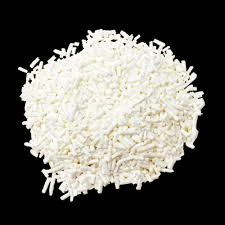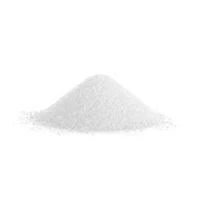TEL: 0086-311-88862036

Jan . 25, 2025 20:22
Back to list
biscuit preservatives
Preservatives have become a staple component in extending the shelf life of biscuits, allowing them to maintain freshness and texture during storage and transport. With growing consumer consciousness about food safety and quality, understanding biscuit preservatives is crucial for both manufacturers and consumers. Here we delve into their role, benefits, commonly used types, and considerations for ensuring quality and safety in biscuit production.
Despite the benefits of preservatives, their use requires careful consideration of dosage, as excessive amounts can lead to off-flavors and potential health effects. Regulatory bodies such as the FDA and EFSA have established permissible limits for preservative usage in baked goods, ensuring consumer safety while maintaining product efficacy. Adhering to these guidelines is paramount for manufacturers seeking to uphold trust and credibility. Moreover, the integration of preservatives in biscuit production should not overshadow the importance of stringent hygiene practices and good manufacturing processes. A well-managed manufacturing environment minimizes the initial microbial load, reducing reliance on preservatives and thereby supporting a more natural approach to biscuit preservation. The choice of preservatives also reflects consumer trends and preferences, with an increasing demand for transparency in ingredient sourcing and manufacturing processes. Manufacturers are now expected to substantiate claims such as natural or free from artificial preservatives with clear labels and certifications, enhancing consumer trust and brand loyalty. While preservatives play a vital role in extending the shelf life of biscuits, ongoing research continues to explore innovative solutions that balance safety, efficacy, and health considerations. Emerging technologies, such as active packaging and biopreservatives, offer promising alternatives that could further redefine the landscape of biscuit preservation. In conclusion, biscuit preservatives serve as a crucial component in maintaining product quality, safety, and longevity. Employing the right type and amount of preservative, along with adherence to regulatory standards and consumer demands for transparency, ensures that biscuits remain delightful and safe for consumption. As the biscuit industry evolves, embracing both traditional and novel preservation methods will be key to meeting future market challenges and opportunities.


Despite the benefits of preservatives, their use requires careful consideration of dosage, as excessive amounts can lead to off-flavors and potential health effects. Regulatory bodies such as the FDA and EFSA have established permissible limits for preservative usage in baked goods, ensuring consumer safety while maintaining product efficacy. Adhering to these guidelines is paramount for manufacturers seeking to uphold trust and credibility. Moreover, the integration of preservatives in biscuit production should not overshadow the importance of stringent hygiene practices and good manufacturing processes. A well-managed manufacturing environment minimizes the initial microbial load, reducing reliance on preservatives and thereby supporting a more natural approach to biscuit preservation. The choice of preservatives also reflects consumer trends and preferences, with an increasing demand for transparency in ingredient sourcing and manufacturing processes. Manufacturers are now expected to substantiate claims such as natural or free from artificial preservatives with clear labels and certifications, enhancing consumer trust and brand loyalty. While preservatives play a vital role in extending the shelf life of biscuits, ongoing research continues to explore innovative solutions that balance safety, efficacy, and health considerations. Emerging technologies, such as active packaging and biopreservatives, offer promising alternatives that could further redefine the landscape of biscuit preservation. In conclusion, biscuit preservatives serve as a crucial component in maintaining product quality, safety, and longevity. Employing the right type and amount of preservative, along with adherence to regulatory standards and consumer demands for transparency, ensures that biscuits remain delightful and safe for consumption. As the biscuit industry evolves, embracing both traditional and novel preservation methods will be key to meeting future market challenges and opportunities.
Next:
Latest news
-
Pure Sodium Dichloroisocyanurate Dihydrate | Powerful DisinfectantNewsAug.29,2025
-
Industrial Chemicals: Quality & Purity for Every IndustryNewsAug.28,2025
-
Nitrile Rubber Honoring Strict Production StandardsNewsAug.22,2025
-
Aspartame Ingredients Honoring Food Safety ValuesNewsAug.22,2025
-
Fertilizer for Balanced Plant NutritionNewsAug.22,2025
-
Cyanide Gold Processing with High Purity AdditivesNewsAug.22,2025
-
Formic Acid in Textile Dyeing ApplicationsNewsAug.22,2025
HOT PRODUCTS
Hebei Tenger Chemical Technology Co., Ltd. focuses on the chemical industry and is committed to the export service of chemical raw materials.
-

view more DiethanolisopropanolamineIn the ever-growing field of chemical solutions, diethanolisopropanolamine (DEIPA) stands out as a versatile and important compound. Due to its unique chemical structure and properties, DEIPA is of interest to various industries including construction, personal care, and agriculture. -

view more TriisopropanolamineTriisopropanolamine (TIPA) alkanol amine substance, is a kind of alcohol amine compound with amino and alcohol hydroxyl, and because of its molecules contains both amino and hydroxyl. -

view more Tetramethyl Thiuram DisulfideTetramethyl thiuram disulfide, also known as TMTD, is a white to light-yellow powder with a distinct sulfur-like odor. It is soluble in organic solvents such as benzene, acetone, and ethyl acetate, making it highly versatile for use in different formulations. TMTD is known for its excellent vulcanization acceleration properties, which makes it a key ingredient in the production of rubber products. Additionally, it acts as an effective fungicide and bactericide, making it valuable in agricultural applications. Its high purity and stability ensure consistent performance, making it a preferred choice for manufacturers across various industries.





